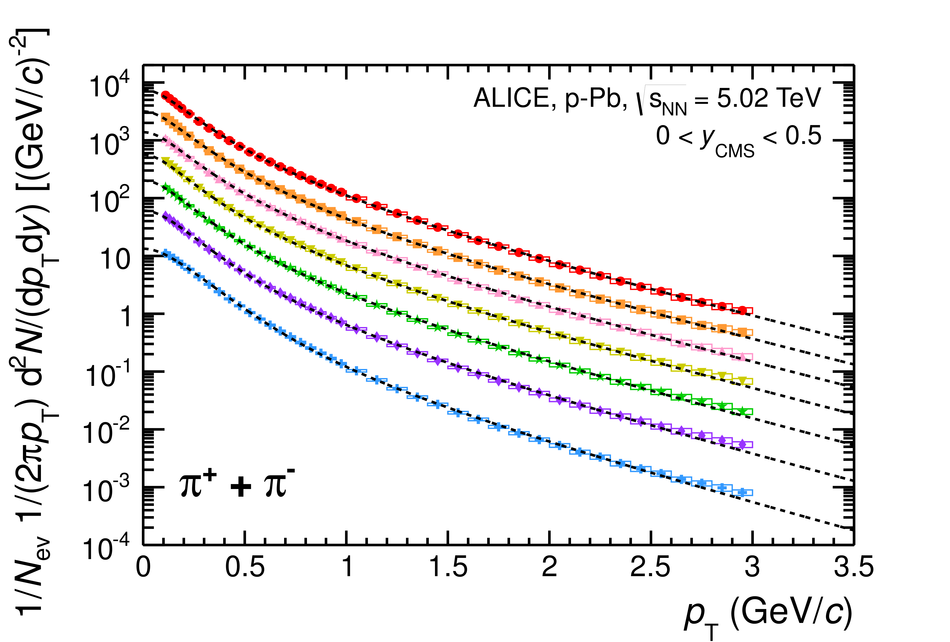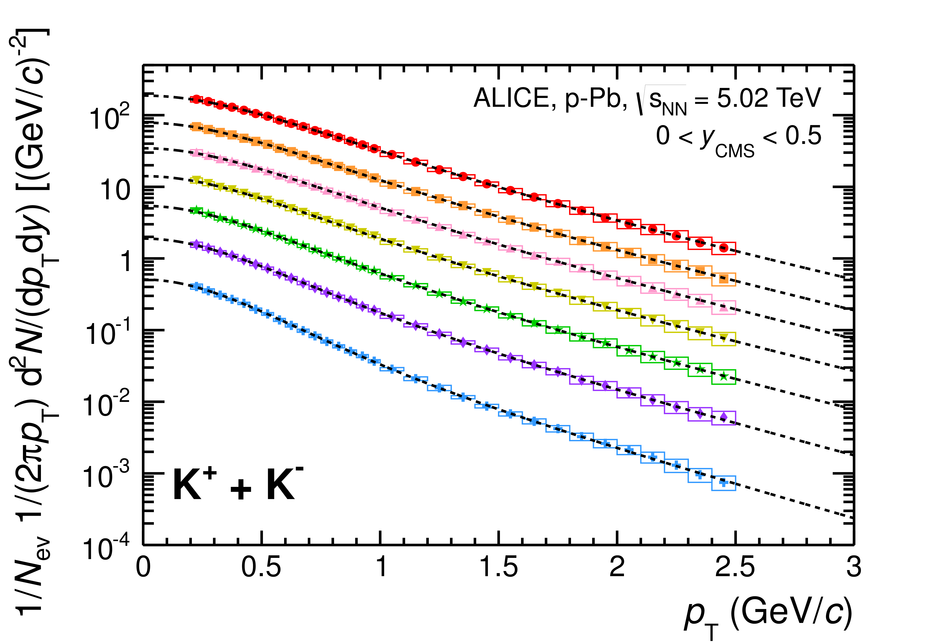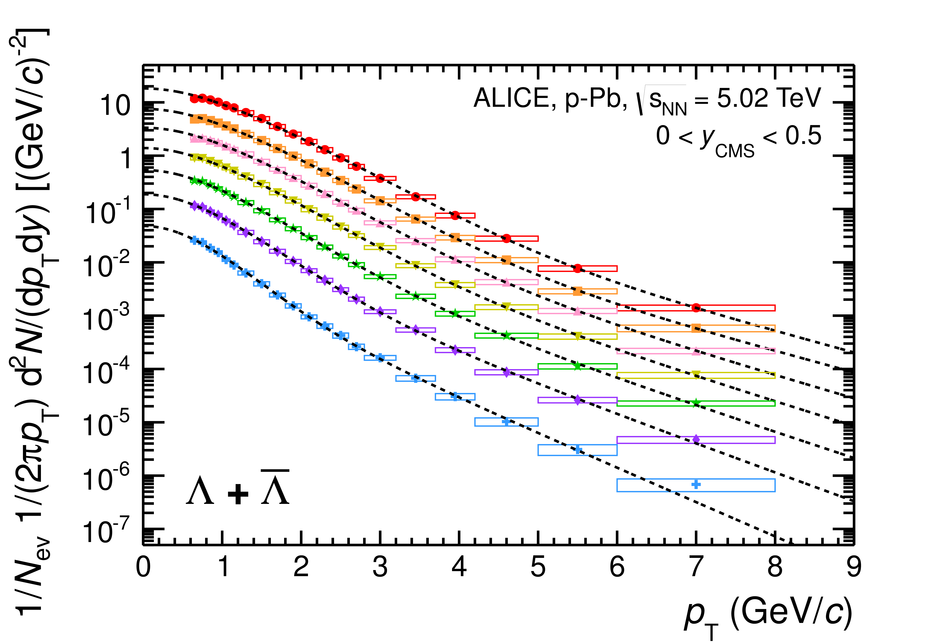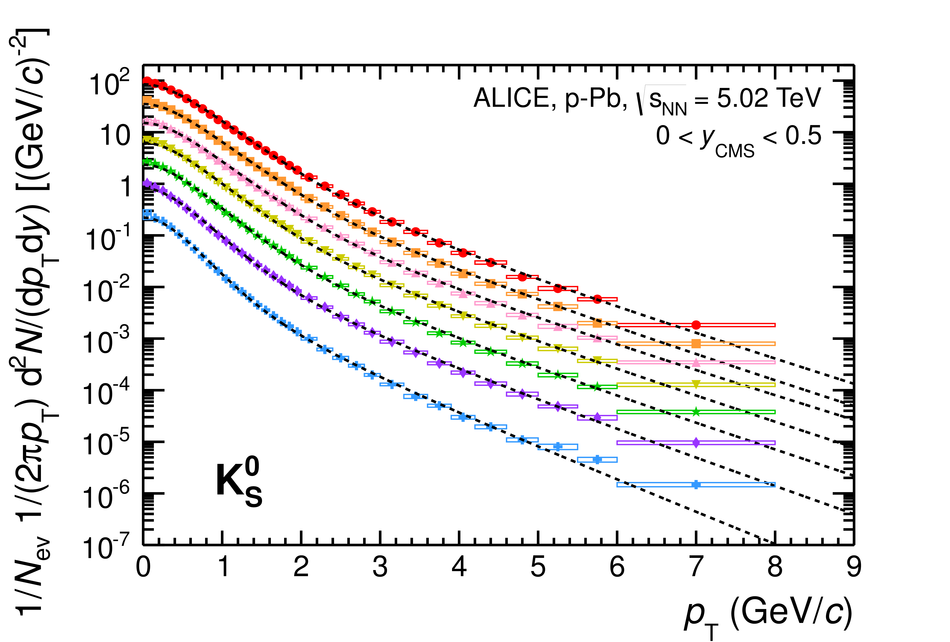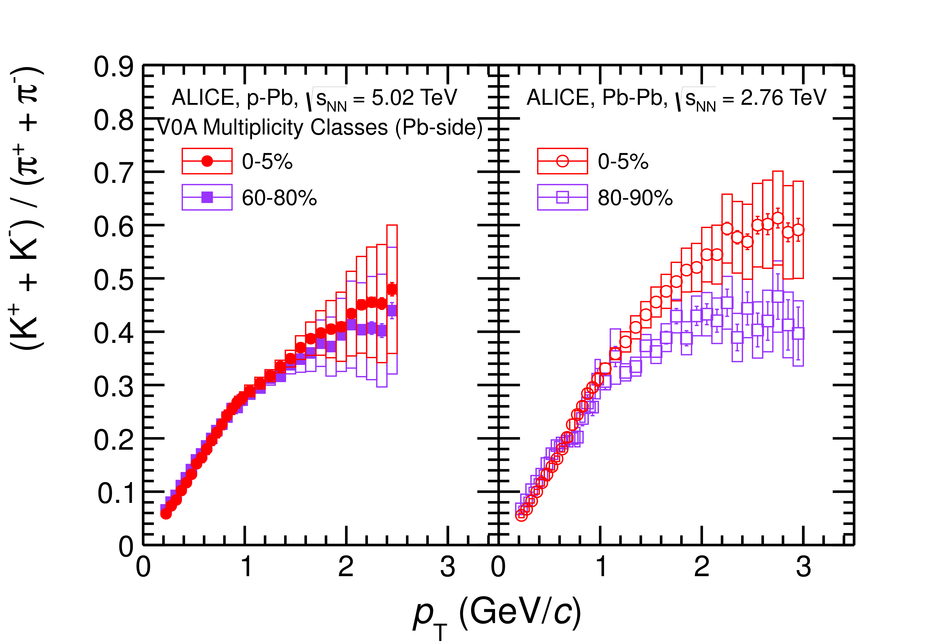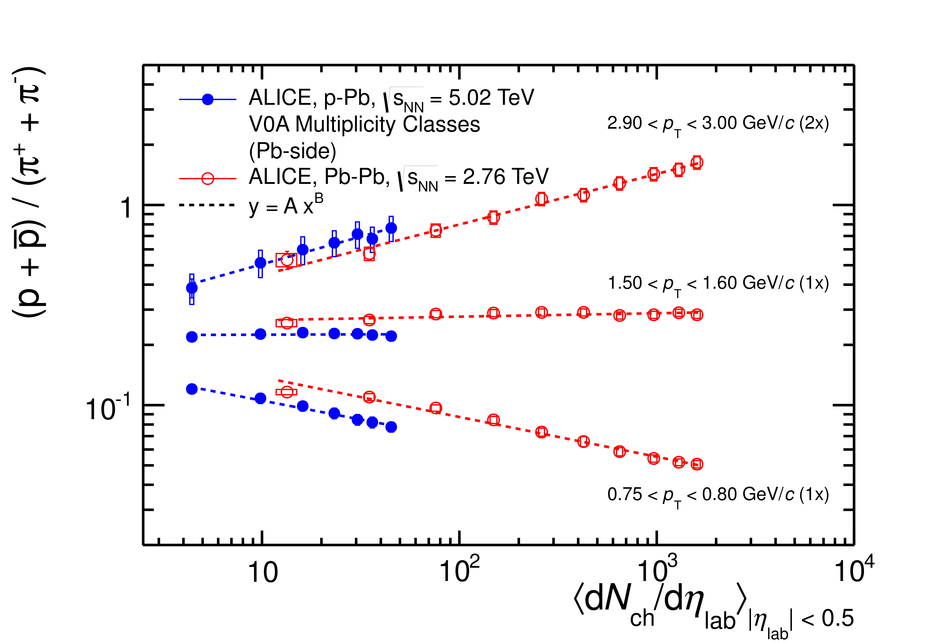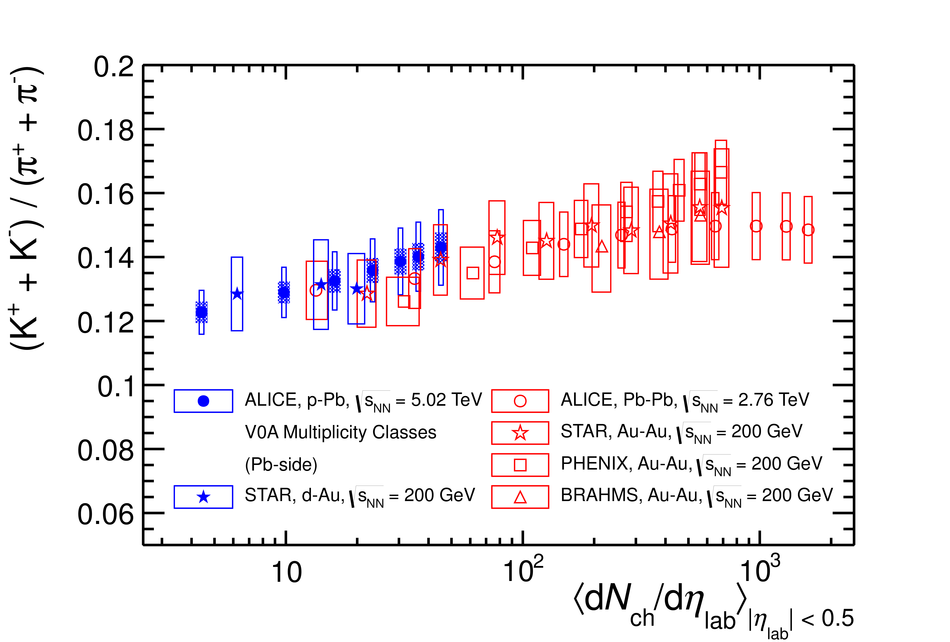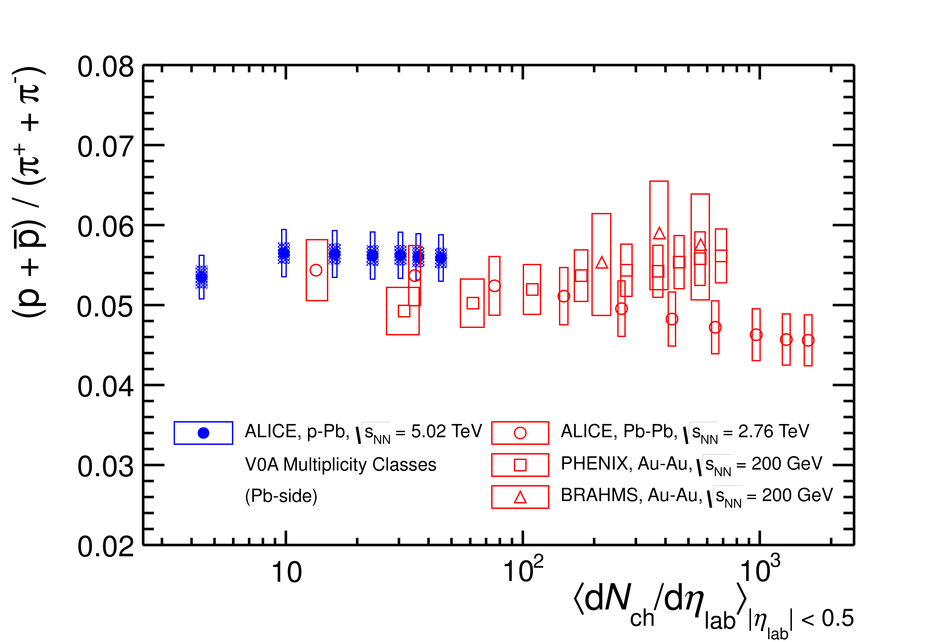In this Letter, comprehensive results on ${\rm\pi}^\pm$, K$^\pm$, K$^0_S$, p, $\rm\bar{p}$, $\rm \Lambda$ and $\rm \bar{\Lambda}$ production at mid-rapidity ($0 < y_{\rm cms} < 0.5$) in p-Pb collisions at $\sqrt{s_{\rm NN}} = 5.02$ TeV, measured by the ALICE detector at the LHC, are reported. The transverse momentum distributions exhibit a hardening as a function of event multiplicity, which is stronger for heavier particles. This behavior is similar to what has been observed in pp and Pb-Pb collisions at the LHC. The measured $p_{\rm T}$ distributions are compared to results at lower energy and with predictions based on QCD-inspired and hydrodynamic models.
Phys. Lett. B 728 (2014) 25-38
HEP Data
e-Print: arXiv:1307.6796 | PDF | inSPIRE
CERN-PH-EP-2013-135

